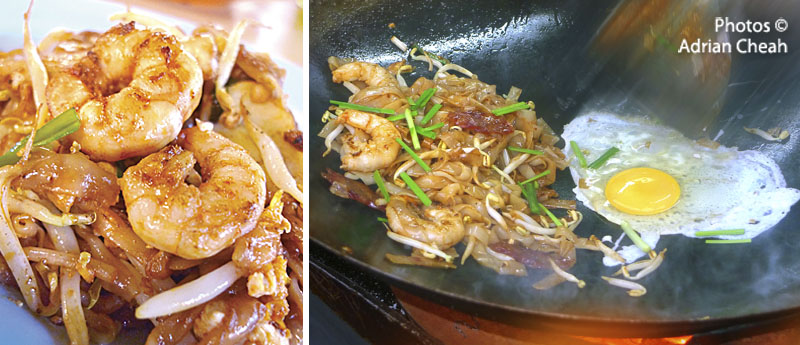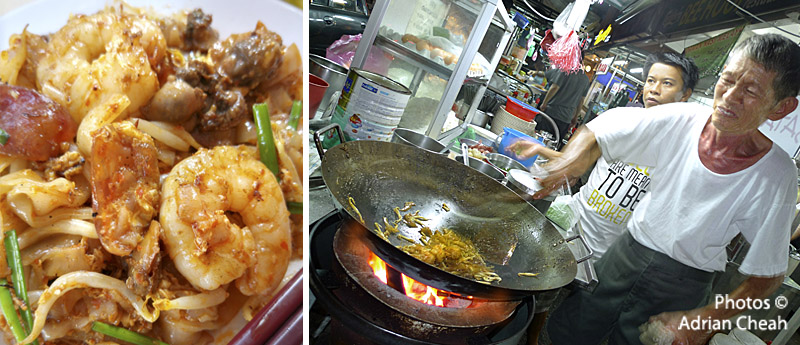Penang’s all-time favourite Char Koay Teow

I have always wondered where the all-so-famous Penang Char Koay Teow came from? Who were its original creators? Some believe that Char Koay Teow (‘fried flat noodles in Teochew) was first sold by Chinese fishermen, farmers and cockle-gatherers on the island who moonlighted as Char Koay Teow hawkers in the evening to supplement their income.

The original recipe was said to have used only garlic and soya sauce with lard and was rather popular among labourers. The high-fat content and low cost of the dish made it attractive to them as it was a cheap source of energy.
Today, this plate of flat rice noodles has succulent prawns, a handful of bean sprouts, seeham (cockles), a few slivers of Chinese waxed sausage, a dollop of ground chilli paste, kuchai (garlic chives) and an egg, all fried up with chopped garlic in a large spoonful of lard and some good black soya sauce. The stir-frying action takes place in a large black metal wok sat over a fiery heat. The strong heat quickly caramelises the sugar in the soya sauce that adds a faintly charred taste known as “wok hei” to the dish. A good plate of Char Koay Teow should have all of the above and must neither be too wet or too dry. The cockles must be done just right – medium cooked and still a bit juicy. It’s best served on a plate layered with a sheet of fragrant banana leaf to complete the experience.
If you are in Penang, you have to add this dish to your list of things to savour on the island. It comes as no surprise that this all-time favourite has been selected as the No.1 Must Eat hawker food through an online poll on the Visit Penang website in 2009. Penang is ranked by CNNGo in 2012 as one of Asia’s 10 Greatest Street Food Cities with a list of the Top 10 Penang Street Food including Char Koay Teow.
There are plenty of Char Koay Teow stalls in and around Penang with each stall having its specialty sauce and ingredients. Some add juicy large prawns; some garnish with crab meat and one even add mantis prawns to the dish. Duck egg is also a popular alternative to the chicken egg as it enhances the aroma and enriches the golden colour of the dish. For our Muslim friends, halal versions are readily available in many hotels and restaurants all over the island.

The common question always comes down to; “Where’s the best Char Koay Teow in Penang?” Not wanting to sound bias, I would strongly suggest that you try more than a plate of Char Koay Teow when in Penang. Roam the streets of George Town and go on a hunt for the perfect plate of this local favourite where you will soon discover the wide variety this simple plate of noodles possesses. It is available for breakfast, brunch, lunch, tea, dinner and supper. Every satisfying mouthful will be its reward, although cholesterol notwithstanding, you will have to agree that there is nothing like a good plate of Char Koay Teow.
---------------------------------------------------------
Written and photographed by Adrian Cheah
© All rights reserved